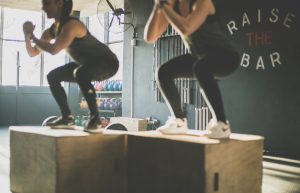 At Next Level Fitness in Irvine, CA, we devise training schedules and workouts based on individual needs. In some cases, we create workouts that use full body workouts, other times, we create those that break down the workouts to various parts of the body. When you do isolation exercises, leg day seems to be the hardest for everyone and there’s good reason why. It’s working the largest muscle groups. That takes a lot of energy and means you’ll have more micro tears that create soreness. Those tears need to heal before doing the next round of exercises on those muscle groups.
At Next Level Fitness in Irvine, CA, we devise training schedules and workouts based on individual needs. In some cases, we create workouts that use full body workouts, other times, we create those that break down the workouts to various parts of the body. When you do isolation exercises, leg day seems to be the hardest for everyone and there’s good reason why. It’s working the largest muscle groups. That takes a lot of energy and means you’ll have more micro tears that create soreness. Those tears need to heal before doing the next round of exercises on those muscle groups.
How you’re training makes a difference, too.
If you’re doing intense training, with high volume reps and heavier weights, do training just once a week. For those who aren’t working as intensely, aiming for two days a week is important. You need to make sure you give your muscles time to heal between workouts. That can be anywhere from 48 to 72 hours. Most people tend to workout legs twice a week and use squats, lunges and leg extensions in their leg workout.
Ask yourself how you feel.
It’s normal to have some soreness. It comes with working muscles in a way they’re not accustomed. You can, however, have unbearable pain and that’s quite different. If pain comes with joint discomfort, swelling or immediate pain, you might have an injury. There’s also delayed onset muscle soreness—DOMS–which occurs a few days later and is from trying to do too much too soon. Listen to your body. Everyone has aches and pains from working out, but it shouldn’t be so unbearable you can’t walk.
Training causes stress on the body, especially if you’ve worked hard.
When working legs, larger muscles, a lot of things affect how frequently you workout. It’s all about how quickly you can recover. If you’re older, your ability to recover may be slower. The number of workouts you do each week also is based on your goal. Do you want to build strength? Build for competition? Are you an athlete? Some people think that isolation exercises you combine during aren’t appropriate for some types athletes that require the body needs to work more synergistically.
- Don’t forget to warm up and cool down. Part of the problems with leg day come more from lack of muscle warming or cooling down after a workout. Make sure it’s part of your program.
- Make sure you’re adequately hydrated. If you feel sore an achy, wash it away by drinking water. It helps muscles heal by getting nutrients to your muscles. Walking or swimming later or the next day can help stimulate circulation and muscle healing.
- Focusing on total body workouts will put less stress on the legs and still get them in shape. Once you’ve built muscle tissue, switching to isolation exercises for the legs can sculpt them without as much pain.
- If you still have a lot of pain after two days, give it one more day of rest to let your muscles heal. Working out the muscles too quickly can be more damaging than not working out at all. It prevents the muscles from healing.
For more information, contact us today at Next Level Fitness
